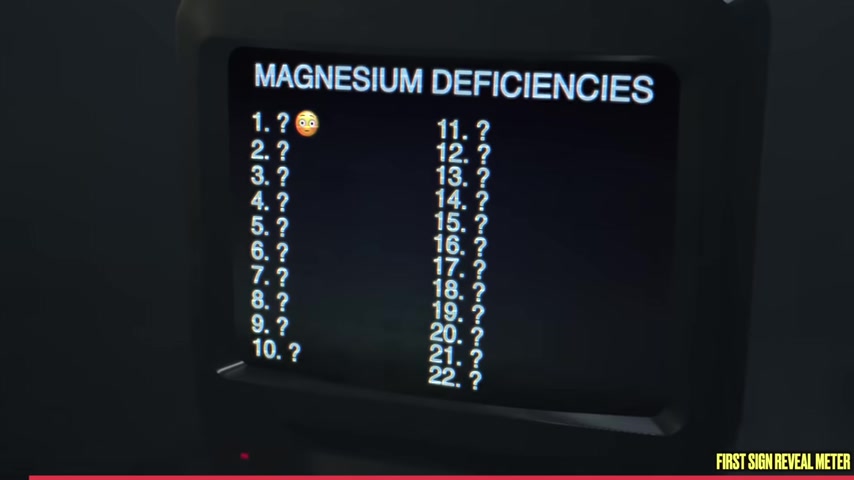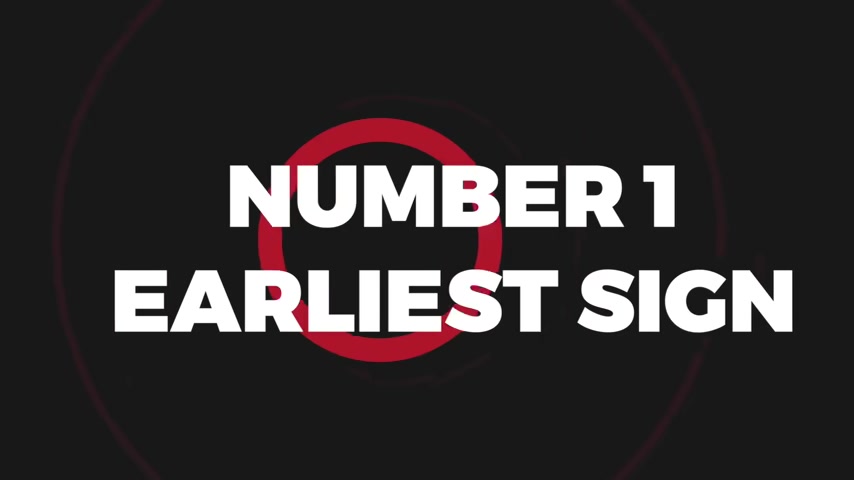
https://youtu.be/EN9e99iRTCQ?si=TYm2wDx974xPQr74
First Sign of a Magnesium Deficiency NEVER to Ignore

Let's talk about the earliest sign of a magnesium deficiency that you do not want to ignore .
There are 22 signs , but the earliest sign will shock you .
So stay tuned for that .
Now check this out .
Most of your magnesium is right inside the bone , 60% .
20% is in your muscles .
19% is in the soft tissues and the different organs .
And only 1% of all the magnesium is in your blood .
Magnesium is the most overlooked nutrient by doctors .
You cannot determine a magnesium deficiency by a blood test because half of the magnesium in your bones , 30% can be used as a reservoir for extra magnesium for your blood .
So you can be very magnesium deficient in your body yet have normal magnesium on your blood test .
There's no single quick way to determine your magnesium status in an accurate way .

But first , let's talk about how someone would be deficient .
Let's first go through the things that can deplete you of magnesium .
Of course , you have the sugar , the refined carbohydrates .
You have the alcohol , you have cirrhosis of the liver .
You also have even , in the farms , they put this fertilizer NPK stands for nitrogen , phosphorus , and potassium .
They don't put magnesium back in the soil .
And then if we eat the plants that are low in magnesium , we become deficient in magnesium .
Malabsorption is another common reason .
That means you have inflammation in your gut , which prevents you from absorbing magnesium and other nutrients .
If you're on a diuretic , if you are on a PPI , that's something that helps with acid reflux .
If you had gastric bypass , if you're low in vitamin d , you're not gonna be able to absorb magnesium .
If you have inflammation , you won't be able to absorb magnesium .

And there are also magnesium deficiency diseases , like diabetes , high blood pressure , arthritis , osteoporosis , and cardiovascular disease because there's a huge association between all of those diseases and low magnesium .
But now let's talk about the diet .
What foods are high in magnesium ?
Well , if you guessed leafy greens , you are correct .
These are vegetables .
Anytime you see green , think chlorophyll .
Chlorophyll is the blood of the plant .
So if you want more magnesium , think more green .
And I'm not talking about pistachio ice cream or lime green Jell O .
If you do , certain vegetables like spinach that have high oxalates , that can reduce the absorption .
So in other words , some of the foods that do have magnesium , like almonds , chocolate also have oxalates , which can block the absorption .


Now people will tell you that grains are high in magnesium , right ?
Well , grains also have phytates , which block magnesium .
Those are whole grains .
But you say , well , I'm eating refined grains .
Well , when they refine the grain or any food , they get rid of most of the magnesium .
So grains are not a good source of magnesium , whether they're a whole grains or refined grains .
Also , when you boil food , you end up leaching out some of the magnesium .
Roughly the RDAs , for the recommended amount of magnesium is between like 304100 , maybe a little bit more .
There's some data that shows that ancient man needed a lot more , almost double that .
And so most people don't even meet the minimum amounts that we need to prevent a magnesium deficiency .
And this is why between 48 90% of the population is deficient in magnesium .
Also realize you can get magnesium from various meats , chicken , especially pork .

You can even get it from red meat and even cheeses , especially Parmesan cheese , and especially shellfish .
So now let me go through some of the body clues that , might indicate that you're low in magnesium .
And then I'll get to the first earliest sign because the earlier you know you have a deficiency , the better .
Okay .
Anxiety , insomnia , depression , migraine headaches , restless leg syndrome , muscle cramps , fatigue , Tourette's , oxidative cholesterol , high homocysteine levels , high blood pressure , calcification in the arteries , arrhythmias , risk for getting a stroke , metabolic syndrome , polycystic ovarian syndrome is PCOS , risk for kidney stones , higher levels of calcium in the blood , inflammation , nystigmas , where your eyes are going back and forth , and asthma .

So you're probably kind of surprised how many different symptoms could occur if you're deficient in magnesium .
But just realize if you have sufficient magnesium in your body , all 350 different enzymes can finally work and the body can actually do its job .
But now let's get to the number one earliest sign that you have a magnesium deficiency .
Neuromuscular hyperexcitability .
Now , what the heck does that mean ?
That's a fancy word for tetany or twitching of your muscles , whether you get it underneath your left eye like a or even on your arm like this , it starts to twitch like that .
Any of those little twitching sensations are the early signs of a magnesium deficiency .
You have to realize that your nerves require magnesium to work .
And apparently when you're deficient in magnesium , the nerves become more excited .
You get faster nerve impulses , not slower .


And if you really wanna know what's happening , we don't have enough magnesium to push the calcium out of the cell .
So now we have this buildup of calcium inside the cell .
It can't come out because we don't have enough magnesium .
So we don't have the normal contraction relaxation .
So with magnesium and calcium , we have this whole dynamic between nerve impulses and muscle contraction and relaxation .
Now , since I brought up these right here , it's called leafy greens .
If you want to know how much you really need to not only get your magnesium but your potassium , you should watch this video right here .
Are you looking for a way to reach a wider audience and get more views on your videos?
Our innovative video to text transcribing service can help you do just that.
We provide accurate transcriptions of your videos along with visual content that will help you attract new viewers and keep them engaged. Plus, our data analytics and ad campaign tools can help you monetize your content and maximize your revenue.
Let's partner up and take your video content to the next level!
Contact us today to learn more.